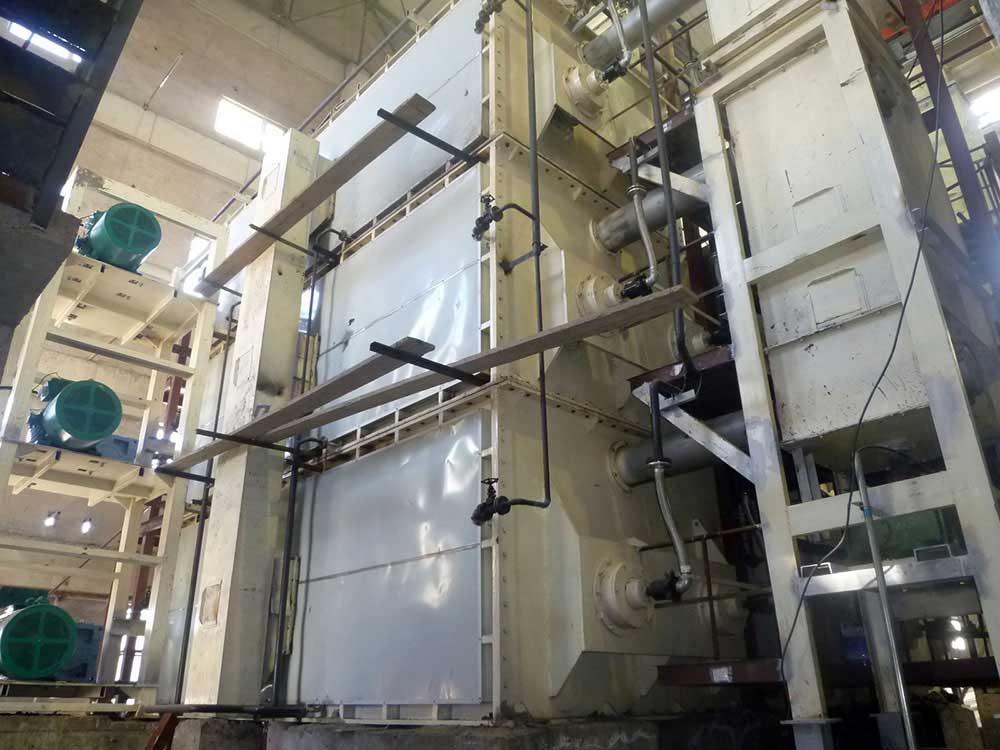Slime drying equipment
Introduction to slime drying technology
With the improvement of mechanization of coal mining, the proportion of pulverized coal and coal at the end of coal is increasing, and the amount of primary slime and flotation tail coal is increasing. As a by-product produced in the washing process, coal slime has many inconveniences for the comprehensive utilization of coal slime due to its fine particle size, strong water holding capacity, high ash content and more clay. Both polluting the environment and causing waste of resources, the economic value of slime has not been fully exploited.
In the face of the increasingly scarce coal resources, the drying and reuse of slime is imminent. The new technology of RD multi-layer multi-stage slime drying treatment is to solve the problem that the slime cannot be comprehensively utilized due to high moisture (20% ~ 30%). problem.
In many powdery, granular, viscous material drying schemes (such as slime), hollow blade dryers are generally considered to be an ideal solution, but due to institutional constraints, the throughput of a single unit Not ideal enough.
Based on the original hollow blade dryer, RD Drying Equipment Co., Ltd. has developed a new type of drying device. The whole set has been transplanted with the mature technology of hollow blade dryer drying materials, and is equipped with thermal energy recovery technology and multi-effect evaporation technology. The three technologies are combined by a multi-layer structure, and at the same time, the large-scale manufacture of the hollow blade dryer is realized. It is a drying device that can process materials in large quantities.
Working principle of Slime drying equipment:
1. Each layer can be considered as a modified version of the hollow blade dryer (blade dryer), which works in the same way as the hollow blade dryer. The number of layers can be combined into 3 to 5 layers according to production needs. According to the change of powder and granule physical properties during the drying process, the change of water evaporation rate, the change of comprehensive heat transfer coefficient, the structural design of the blades at all levels, and the design and selection of operating parameters.
Due to the high water content before drying, the supplementary feeding port is supplemented in the secondary drying. During the drying process, the secondary dried material is granular, the volatile area is large, and the heat transfer surface is updated quickly. The heat coefficient is large, which is conducive to rapid drying, and the supplemental feeding mode is beneficial to increase the drying rate.
2. The dryer uses steam, hot water or heat transfer oil as the heating medium, and the shaft end is equipped with a rotary joint for the introduction and export of the heat medium. The heat medium is introduced into the inner cavity of the dryer blade shaft, the blade shaft is heated, and the material is heated and dried by conduction heating. Through the rotation of the blade, the material is turned over and stirred, the heating interface is continuously updated, and the heated blade is fully contacted, and is heated sufficiently to evaporate the moisture on the surface of the material. At the same time, the material is conveyed in the direction of the discharge port with the rotation of the blade shaft, and the stirring is continued during the transportation, so that the water oozing out from the material continues to evaporate. The uniformly dried product is discharged from the discharge port.
The RD drying device adopts multi-effect drying, and the multi-stage dried volatilized steam is compressed by the compressor to remove the condensed water, and the formed saturated steam enters the lower stage, so that the heat energy is fully utilized.
The RD drying device finally completely converts the volatilized water vapor into condensed water for discharge, without exhaust gas discharge, and does not require an exhaust gas treatment device to avoid secondary exhaust gas pollution.
The volatile gas inside the RD drying device is discharged from the bottom outlet chamber by the upper outlet step by step. Since the bottom layer is a relatively dry material, the uppermost layer is a paste-like material. From top to bottom, the gas velocity is gradually reduced. Small, due to the stepwise change of the vapour gas flow rate and the change of the moisture content of the material, and the baffling effect of the gas in the drying device, the dust entrainment in the gas discharge drying device is small or no dust entrainment.
Application after drying of slime:
The process adopts a new technology of crushing and dispersing the coal slurry and then drying it, so that the treatment of the slime is continuous and industrialized. After the treatment, the moisture of the slime can be reduced from 25% to 28% to 12%. Left and right, due to the introduction of the pre-dispersion device in the process, the drying efficiency of the slime is greatly improved, and the dried slime can be mainly used in the following aspects:
(1) Processing coal slime coal as raw material for industrial boilers or residents to use, improve coal quality and increase added value;
(2) As a fuel for the foundry industry of the power plant, improve fuel utilization, reduce production costs and increase economic returns;
(3) It can be used as an additive in brick factories to improve the hardness and compressive strength of bricks;
(4) As a cement plant to improve the performance of cement;
(5) Coal slime containing certain specific components can be used as a chemical raw material.
In summary, the five points can fully explain that the use and value of the dried coal slime is very positive. The development of industry is inseparable from the exploitation of resources. Coal as an energy resource is indispensable in industrial development and daily life.
In the mining process, after washing, stacking in the open air, part of the coal is washed away by water, and sludge is formed to form coal slime, which causes the loss of coal source. It is also difficult to recycle and reuse the slime. R&D and production are the most effective ways to recover and utilize slime.

